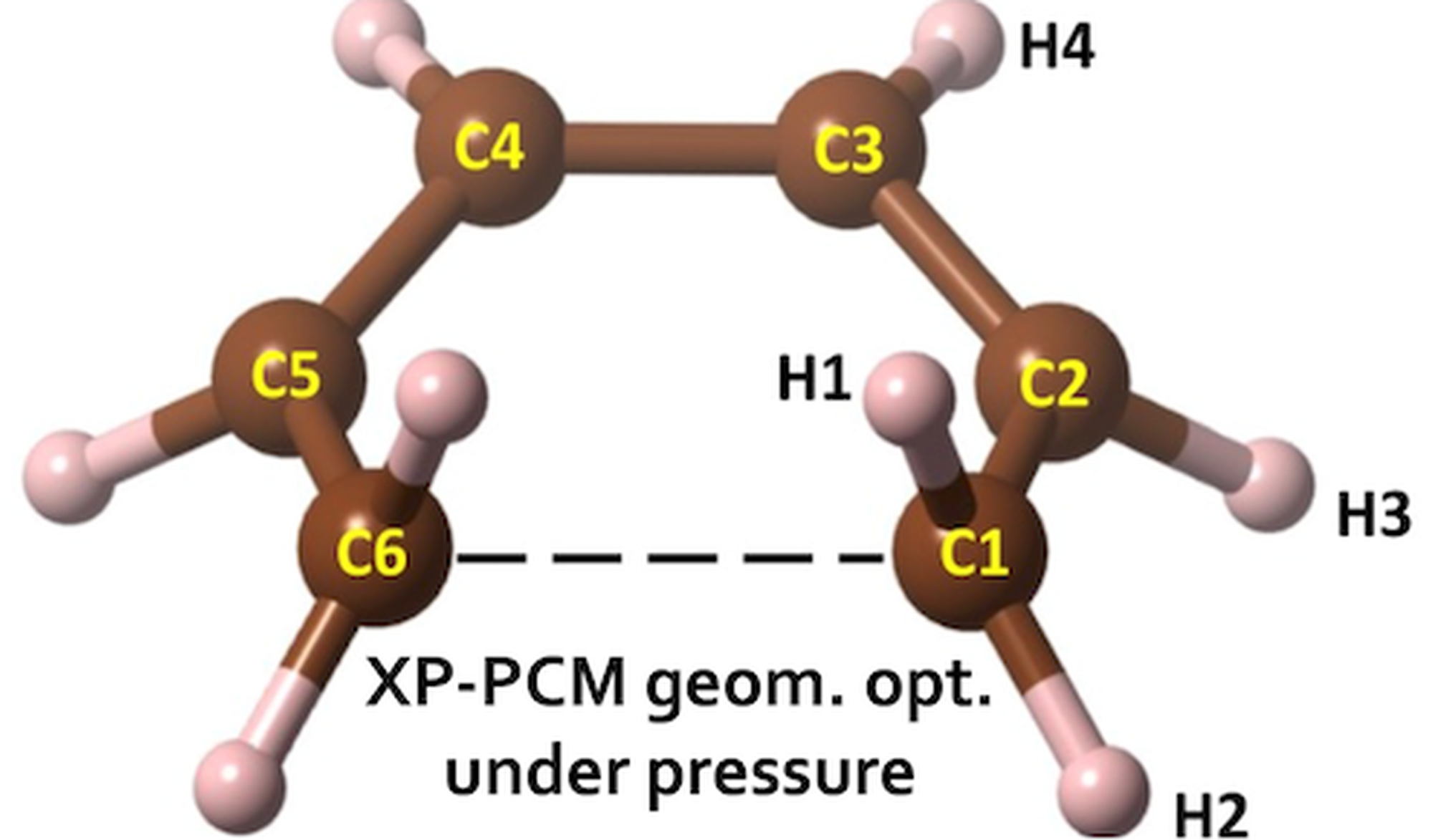Potential energy surfaces of compressed molecules

Mechanochemistry uses mechanical forces to initiate or accelerate chemical reactions, different from traditional approaches of using heat, light, and chemical reagents. Mechanochemistry has potential applications in the synthesis of molecules and materials through solvent-free and more environmentally friendly methods. Recently, mechanochemistry has seen an increasing interest across diverse ranges of disciplines.
Hydrostatic compression is one way of introducing mechanical force into reaction systems. The hydrostatic pressure exerted on the molecules modifies their structures, properties, and reactivity. A key to understanding the high-pressure reactivity of molecules is the reliable calculation of the potential energy surfaces of compressed molecules. Several theoretical methods have been developed to this end, one being the extreme-pressure polarizable continuum model (XP-PCM). This quantum chemical method aims to introduce the effects of pressure on the calculation of the electronic energy of a molecular system in a dense medium via a Pauli exchange-repulsion interaction between the molecular system and the external medium.
In this project, we will use the XP-PCM method to study the effect of pressure on the potential energy surfaces of molecules under pressure. Main tasks will be the geometry optimization of the equilibrium and transition state structures for a range of molecules and reactions under pressure.
